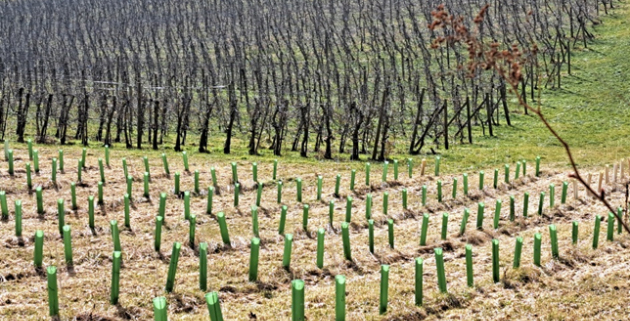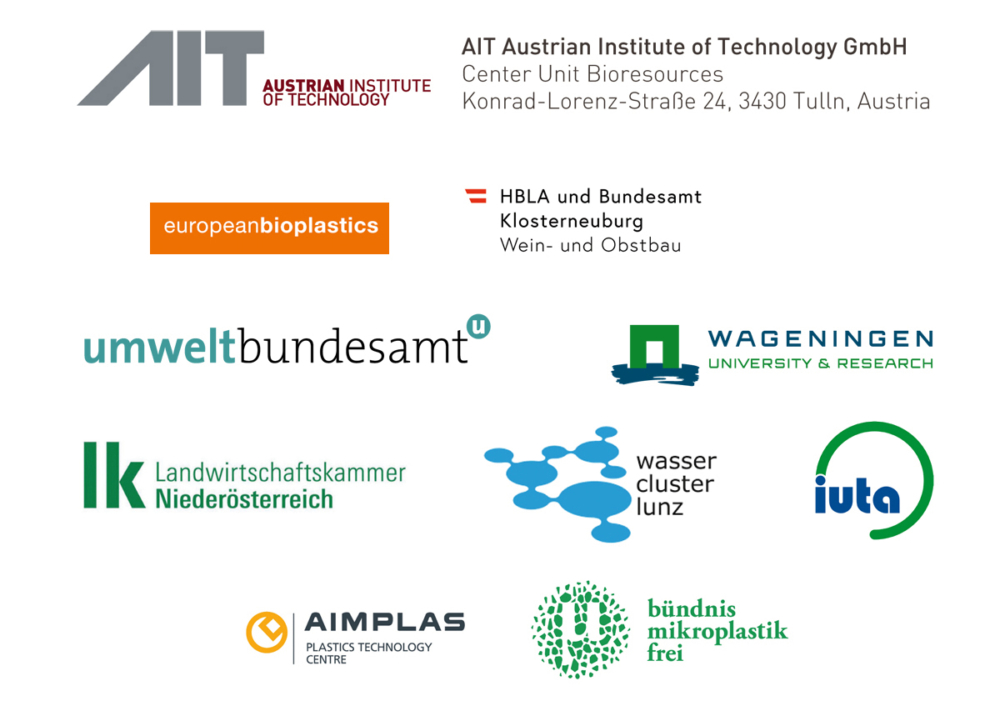Newsletter no. 1
With this newsletter, we want to inform you about the NETmicroplastic initiative, its core network partners, and current and upcoming activities. NETmicroplastic is a multi-actor network focusing on microplastic in soil. It aims at gaining scientific knowledge, identifying potential risks, and triggering innovation in all microplastic-related fields, while setting a special focus on fruit and wine growing.
Talk with Claudia Preininger, initiator and coordinator of NETmicroplastic
With the aim of incentivizing research and development, the province of Lower Austria runs a programme for building a number of thematic networks of critical size. NETmicroplastic initiated by the AIT Austrian Institute of Technology is one of them. We talk with Claudia Preininger (CP), who developed the ideas behind NETmicroplastic, about her concept and the network’s plans and future perspectives.
We are familiar with “microplastic” as a catchword in the media, where it is mostly presented as a threat to human health and the environment. What are the real dangers?
CP: We all agree that we need to reduce plastic waste in the environment. Yet, it is not well understood which effects plastics have in the soil, and we still lack standardized analysis methods for detection and quantification. The “real dangers” are not fully clear. It is, therefore, important to take a closer look at the impact of plastic in the environment (considering especially the nexus soil – plant – food) and, at the same time, to look out for new technologies and alternatives to currently used, potentially harmful, plastic materials.
Is this how you came up with the idea to build the NETmicroplastic network?
CP: Right! In fact, linking between the environment and technology is crucial if we want to work out solutions that will be widely accepted by various stakeholders. At the same time, we need to raise awareness of microplastic and, more generally, of the importance of managing soil health. It is very important to me that, in NETmicroplastic, we actually investigate how microplastic interacts with soil, including microorganisms and arthropods, and how crops and other plants are affected, rather than just counting plastic on the field. On the material side, it´s important that we assess bioplastics as critically as is commonly done with conventional plastics, regarding for instance, degradability in soil and biological effects. And that we develop new polymer materials that someday may replace non-readily degradable materials contained in fertilizers, seed coatings, and plastic products currently used in agricultural practice…
So please tell us, how does the network operate?
CP: NETmicroplastic wants to tackle multiple facets of microplastic in soil. Here, the AIT researcher team, including myself, is supported by 11 core network partners from four European countries, mainly from Austria, but also Germany, Spain and the Netherlands. The network is currently composed of policymakers, opinion leaders, the agrochemical industry, technology providers, industry and farmer associations, the educational sector, and of course, scientists. And we want it to develop and spread even more broadly. It’s our priority that we provide information tailored very specifically to our stakeholders’ needs, be it schools or farmers. Also, it is central to the network that its outputs and messages are entirely fact-based, meaning that we strictly avoid ad hoc “plastic bashing”… This is why we have an interplay of many different stakeholders.
What has happened so far and what are the next steps?
CP: We have been quite active in the past five months. We have set up a project website, www.net-microplastic.eu, which has links to relevant projects in the field. Then, there is the twitter account @netmicroplastic, which helps extend and sustain the network, besides various dissemination materials such as brochures. We are especially proud that we have submitted a first European research proposal. Presently, we are working on a stakeholder mapping, which will receive further input from our Stakeholder Workshop – that will be coming up soon, at the end of April!
What else have you got planned?
CP: NETmicroplastic sets a focus on fruit and wine growing, and on composting. So, next steps will be to get relevant stakeholders involved, and to find ways of reducing the use of plastic products in vineyards and orchards without compromising product quality and performance. We also want to bring this knowledge into agricultural schools in Austria. We now have a survey running among university students from different disciplines, where we want to find out what students generally know about microplastic. We will do two other surveys by the summer, one among farmers and the other one among (bio)plastic producers. This will help us define in which direction future research should go. We want to get to know what (bio)plastic producers and farmers think about their perspectives, and also to translate this into activities like training and education.
NETmicroplastic seems to be a lot about stakeholder involvement. Who should get involved and why, and how?
CP: Indeed, we need many different stakeholder groups for finding solutions to issues around microplastic in soil, and to ensure that, later on, our approach will gain wide acceptance in society. To name a few: Policy and decision-makers who provide information on available standards and regulations; industry and industry associations representing the agro-chemical industry; technology providers and plastic material producers who develop more easily degradable products; farmers and farmers’ organizations who report on their experiences with plastic products and point out difficulties; scientists in relevant research areas; and the educational sector, such as agricultural, primary, and secondary schools. For example, teachers who would like to run a soil experiment with their classes or come and visit us at AIT in Tulln are most welcome to become part of the network. Joining in is very easy: Interested parties should send an email to info@net-microplastic.eu for more information.
Does NETmicroplastic have its own research program and funding?
CP: NETmicroplastic is a three year-project funded by the “Gesellschaft für Forschungsförderung” of Lower Austria. However, the plan is that the network will exist and grow beyond the project’s lifetime. Within NETmicroplastic, funding is provided for networking activities like workshops and public events, and for surveys, but there is no funding for impact assessment or research on materials. That is why NETmicroplastic also engages in grant application. Right now we are very busy with acquiring additional research funds.
What do you wish to achieve in the next three years?
CP: Well, first of all – we hope that we have created a steadily growing network that will continue also in the upcoming years, with well-established communication channels among all relevant stakeholder groups. Then, we plan that we have at least two substantial research projects running, where we bring forward some of the NETmicroplastic topics. Another aim is to provide a research and innovation-roadmap for Lower Austria. My personal wish is that we will carry out a number of fun soil projects together with schools. And, regarding research, that we will identify and develop some environmentally friendly materials for plastic products used in wine and fruit growing.

Are you a student?
What are your thoughts about microplastic in soil?
You are very welcome to participate in a brief survey by just following the link below to access the questionnaire. The questionnaire differentiates between students studying in different Austrian provinces. Non-Austrian participants should choose “other”. Survey results will be published on our website.
NETmicroplastic Questionnaire:
https://easy-feedback.de/survey-NETmicroplastic/1635335/6247Xc
NETmicroplastic’s core network partners




